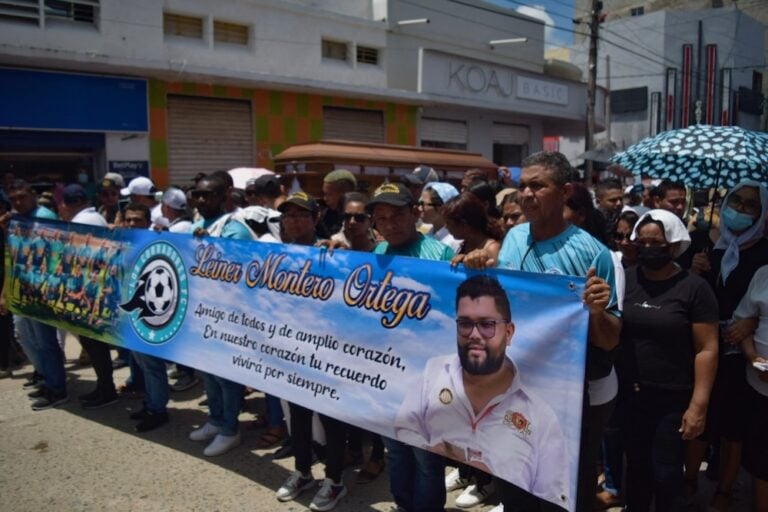(FLIP/IFEX) – On 5 July 2008, a group of soldiers prevented several journalists from covering events in the rural area of San Vicente del Caguán, Caquetá, in southern Colombia, in addition to attempting to intimidate them by firing gunshots into the air. The journalists arrived in the area where two soldiers had just been killed […]
(FLIP/IFEX) – On 5 July 2008, a group of soldiers prevented several journalists from covering events in the rural area of San Vicente del Caguán, Caquetá, in southern Colombia, in addition to attempting to intimidate them by firing gunshots into the air.
The journalists arrived in the area where two soldiers had just been killed in an armed confrontation. When the journalists tried to take photographs of the scene and gather information about what had happened, a soldier informed his superior by radio of the journalists’ activities. The superior, not knowing that the radio’s volume was turned up, gave an order saying, “Send those (S.O.B.s) to hell.” Immediately afterwards, the soldiers were abusive toward the journalists and tried to make them leave the area.
While the journalists were asking the soldiers to explain their actions, they heard gunshots and immediately ran for cover. Duverney Gaviria, a correspondent for the Huila-based daily “La Nación”, told FLIP that it appeared that the gunshots had nothing to do with the army’s activities in the area, adding that he saw several soldiers laughing. Gaviria also said that they had identified themselves as journalists upon arrival in the area.
According to William González, a RCN television station correspondent and producer of the “Magazín 740” programme broadcast by the local television station, this type of incident has happened several times before, usually just as journalists try to take pictures. The soldiers typically say, “you guys don’t have anything to report on” and they make the journalists leave the area until everything has been cleaned up.
The journalists added that sometimes when they are reporting in rural areas, on their way back when they have to pass through army checkpoints they are ordered to show the soldiers any photographs or video images they have taken.
Brigadier General Jorge Octavio Ardila Silva told FLIP that any claims that journalists do not have access to information are false and that the media is always kept informed of the army’s activities. In addition, he said that there are established channels for communications between the media and the army, and information is provided only through him.
When asked about the incident on 5 July, Ardila Silva said he was not aware of what had happened but that the taking of photographs or filming of events is prohibited in areas where the military is operating, due to military regulations. “What is not permitted, however, is rudeness or the mistreatment of journalists,” he concluded.
FLIP is concerned about the intimidation of journalists and the obstruction of their work. The army and police have the right to restrict access to areas where a crime has taken place in order to protect the integrity of their investigations, however they cannot categorically forbid journalists from being present in those places. In the same way, the army and police must take the necessary measures to ensure safety in conflict zones and make the appropriate recommendations, but they cannot obstruct the work of journalists. On the other side, journalists have a responsibility to implement appropriate security measures to ensure their own safety and to refrain from hindering the work of the army or police.
Finally, FLIP condemns the actions of the soldiers who fired gunshots with the express purpose of intimidating the journalists and notes that this is not the first time this has happened. It is the duty of the Ministry of Defense to develop training programmes for its soldiers that include respect for the right to information.


